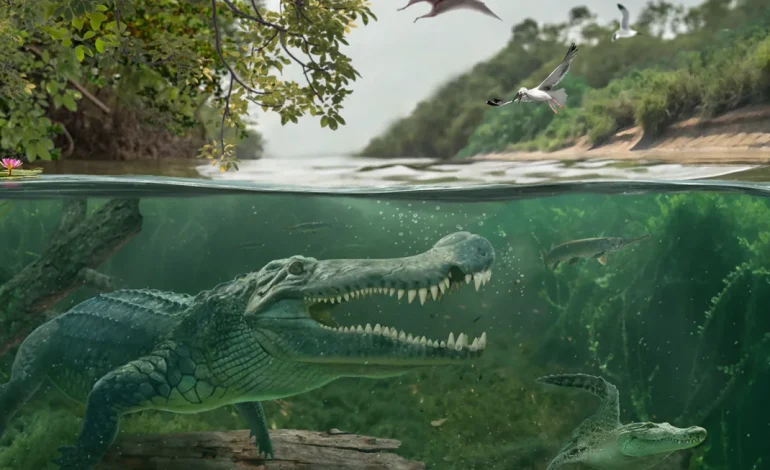A new study is shedding light on how an ancient, bus-sized crocodilian known as Deinosuchus — often nicknamed the “terror crocodile” — evolved into one of the most formidable predators of its time, CNN reports.
Despite its physical resemblance to modern alligators, researchers now believe its success had less to do with size and more to do with its surprising ability to thrive in saltwater environments.
Deinosuchus, which lived between 82 and 75 million years ago during the Late Cretaceous period, was among the largest crocodilian species ever discovered. With banana-sized teeth and a snout shaped similarly to that of today’s alligators, this reptile reached lengths of up to 26 feet (8 meters). Fossil evidence, including toothmarks on dinosaur bones, suggests it fed on dinosaurs and dominated ancient estuaries and rivers across what is now North America.
A recent study published in Communications Biology proposes that the animal’s true evolutionary advantage lay in a trait absent in its modern alligator cousins: saltwater tolerance. This finding comes from a reassessment of fossil data and molecular analysis of existing crocodilians, revealing that Deinosuchus retained ancestral salt glands. These glands, still found in modern crocodiles but lost in alligators, help expel excess salt — an adaptation crucial for survival in marine and brackish environments.
This physiological edge likely allowed Deinosuchus to navigate and inhabit both sides of the Western Interior Seaway, a vast inland sea that once split North America during a period of global sea level rise. Its ability to tolerate saltwater may explain how the species became so widespread, with fossils discovered on both eastern and western shores of this prehistoric sea.
“Our analysis found that saltwater tolerance is a fairly ancient trait of many crocodilians and was secondarily lost in alligatoroids,” said Dr. Márton Rabi, a paleontologist at the University of Tübingen and lead author of the study.
The findings also revise Deinosuchus’s placement in the crocodilian family tree. Previously thought to be closely related to alligators, the new study positions Deinosuchus in a separate evolutionary branch. This realignment helps resolve previous inconsistencies about how such a large alligatoroid could have spread across a marine barrier spanning more than 600 miles (1,000 kilometers).
The researchers further noted that early alligators were relatively small — unlike Deinosuchus, which had already reached enormous proportions before alligators began growing larger around 34 million years ago. This difference in body size supports the argument that Deinosuchus was not a direct ancestor of modern alligators but instead followed a different evolutionary path.
“This new paper really reaches into both the evolutionary and ecological role of this amazing animal,” said Dr. Evon Hekkala, a professor at Fordham University who was not involved in the study. “It fits much better with our current understanding of ecological flexibility among extinct and living crocodiles.”
The study adds to a growing body of evidence suggesting that gigantism in crocodilians has evolved independently many times throughout the past 120 million years — not just during warm periods, but even amid colder climatic phases. As the researchers note, Deinosuchus may not have been an outlier, but part of a broader trend in crocodilian evolution.
While it has long been described as a “greater alligator,” this research positions Deinosuchus as something far more ecologically versatile — a predator whose evolutionary edge was as much about adaptability as it was about sheer size.










The latest news in your social feeds
Subscribe to our social media platforms to stay tuned